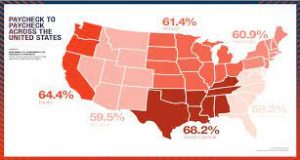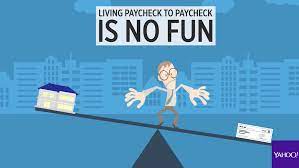
Millions of Americans live paycheck to paycheck, not only low-income earners. Unfortunately, living this way puts one at risk of financial disaster should they experience job loss or an emergency with no savings cushion to cover expenses.
LendingClub recently published a report detailing that 64% of American consumers live paycheck to paycheck at least occasionally and 46% consistently, often because debt prevents them from building savings; but sometimes due to inflation and higher interest rates which leave households stretched thin even after tapping into reserves.
Recent years have seen an upswing in people living paycheck-to-paycheck lifestyles, and not just millennials are struggling. Consumers of all income levels feel its effects – one out of every five Americans earning $100,000+ reported living from paycheck to paycheck according to a new report. Breaking this cycle may be difficult but developing habits of cutting spending and setting savings goals could be effective ways of breaking free.
Attributes leading to Americans living paycheck-to-paycheck may include slow wage growth that has not kept pace with rising costs; compounded with rising student loan debt levels; as well as having to dip into savings accounts or borrow against assets for unexpected expenses – which has nearly 75% of us stressed about finances according to CNBC Your Money Financial Confidence Survey findings.
As those entering retirement anticipate increasing monthly expenses, their expenses often become unmanageable. But it’s possible

to reverse this situation and many Americans have done just that by cutting expenses or postponing nonessential purchases.
One way for those living paycheck to paycheck to break out of this cycle is to either increase their income or reduce expenses. Raising income could involve taking on additional work, negotiating for a pay increase or applying for loans with lower interest rates.
Living on the margin can create an irresistible urge to spend one’s earnings for enjoyment, yet it can be hard to resist spending their earnings without feeling guilt-ridden about doing so. This behavior, known as lifestyle creep, occurs among households of all income levels – one major challenge facing millennials in particular is not overspending or living beyond one’s means, even with student loan debt that eventually needs to be paid off. Writing out financial goals may help keep motivation at bay – posting them somewhere visible can serve as a visual reminder.